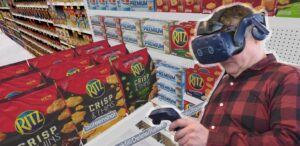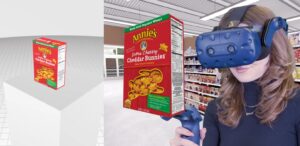HTC Vive Pro Eye vs. HP Reverb G2 Omnicept: Which is Best for Market Research?
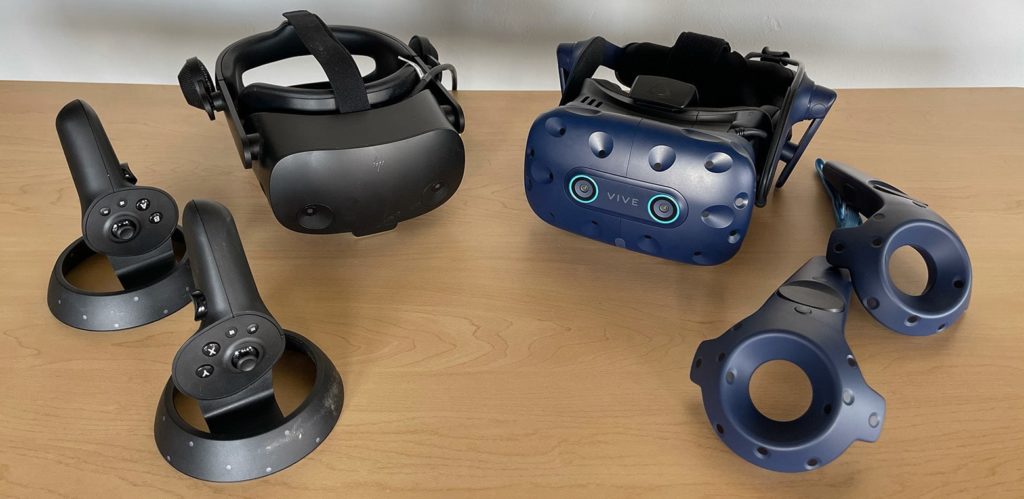
VR has found its way into accelerating the retail innovation process through better market research. Selecting the right virtual reality hardware is part of successfully adopting new technology.
Virtual reality is no longer just a form of entertainment. It is now being used in business for better training, planning, testing, and collaboration.
The retail industry is one area that has taken advantage of virtual reality to devise a faster way to innovate. There are many ways to use VR for retail innovation. One of the most popular is to conduct eye tracking consumer research that uncovers accurate shopper insights.
Shopper research in virtual reality utilizes headsets and external sensors to accurately track consumer eye and body movements. This provides researchers with robust analytics and eye-tracking heat maps to quickly understand the end-to-end customer journey. Collected data is used to uncover unique consumer insights that identify and confirm shopper-approved retail solutions. Ultimately, it will help them better understand what products, shelf layouts, and messaging will elicit a certain response from consumers.
In order to utilize virtual reality for retail planning, you must first choose the right VR system. The best VR headsets for 2021 market research include the HTC Vive Pro Eye and HP Reverb G2 Omnicept. Both devices offer eye-tracking capabilities that are great for uncovering shopper insights. Ultimately, the Vive Pro Eye and Reverb G2 Omnicept offer slightly different VR experiences that will require consideration before purchase.
Headset Comparison
Virtual reality experts at ReadySet were able to receive the HP Reverb G2 Omnicept to test and compare to their usual Vive Pro Eye hardware. After a few weeks of working with both devices, the ReadySet team weighed in on the HTC Vive Pro Eye vs. HP Reverb G2 Omnicept. They offered insight into which VR headset offers the best experience for market research purposes.
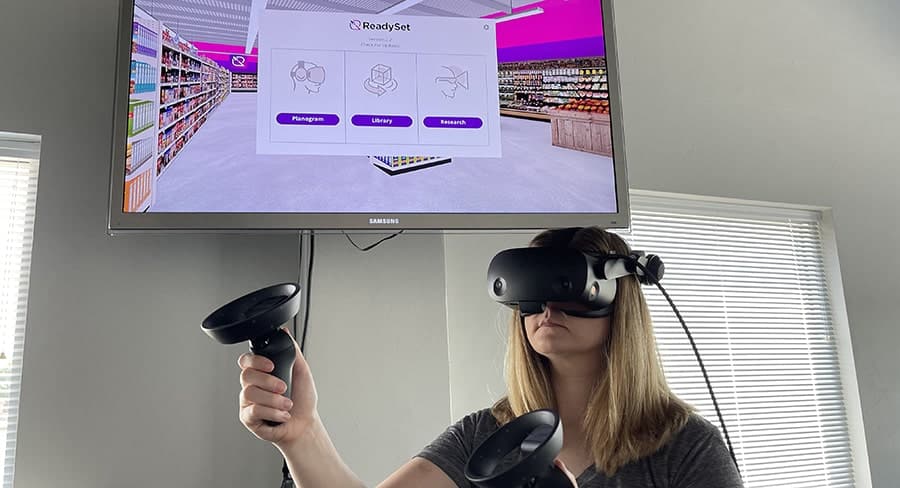
Vive Pro Eye
HTC’s Vive Pro Eye virtual reality headset provides eye tracking technology that retail companies currently take advantage of. It captures up to 90 data points per second which provides accurate behavioral metrics. Track stopping power, total shoppers noticed, dwell times, find times, and purchase volumes.
Reverb G2 Omnicept
The HP Reverb G2 Omnicept is a virtual reality headset recently released in May of 2021. This headset is taking human response measurement a step further by providing biometric data including heart rate, face cam, and pupillometry. This type of powerful data collection will allow market researchers to gain even more finite details on shopper behavior.
Design & Comfort:
HP Reverb G2 Omnicept weighs 727 grams and the Vive Pro weighs 555 grams. Aside from having a lighter weight on the head, the Vive Pro is also able to transition into a tetherless device using a wireless adapter add-on.
Winner: Vive Pro Eye
Display:
Vive Pro Eye has dual OLED 3.5" diagonal while the Reverb G2 Omnicept has a dual LCD 2.89’’ diagonal. OLED displays have higher contrast ratios and wider viewing angles compared to LCDs.
Although the Vive Pro Eye sports an OLED, the Omnicept delivers 2.02x higher resolution. The Reverb G2 Omnicept has 4320 x 2160 pixels per eye compared to the Vive Pro Eye with 2880 x 1600 pixels per eye. It also has a 4° wider field of view. Due to these factors, the HP Reverb G2 Omnicept offers the highest image quality.
Winner: HP Reverb G2 Omnicept
Audio:
The Vive Pro Eye offers a hi-res-certified headset and headphone, high-impedance headphone support, and enhanced headphone ergonomics. The Reverb G2 Omnicept offers a high-quality audio experience with industry leading Valve speakers. Speakers sit off the ear by 10mm for comfort. Both devices provide comparable audio quality.
Winner: Tie
Controllers & Tracking:
Vive Pro controllers are rechargeable and use tracking base stations to support tracking. Reverb G2 Omnicept controllers run on AA batteries. This allows you to quickly swap out the batteries during testing. HTC Vive controllers require charging which needs to be considered as it can be time consuming.
The HP Reverb G2 Omnicept does not require base stations because it uses four cameras placed within a headset to track controllers. The Omnicept not requiring base stations for tracking is convenient, but does sacrifice accuracy and can lead to lost tracking data.
Each headset has its own advantages when it comes to tracking. The Vive Pro Eye is more accurate due to the base station tracking, but the Omnicept offers an easier experience because base stations are not required.
Winner: Tie
Pricing and Value:
The pricing of the Vive Pro Eye and Reverb G2 Omnicept is very comparable. The Omnicept retails at $1,249.00 and the Vive Pro Eye at $1,399.00.
Winner: Tie
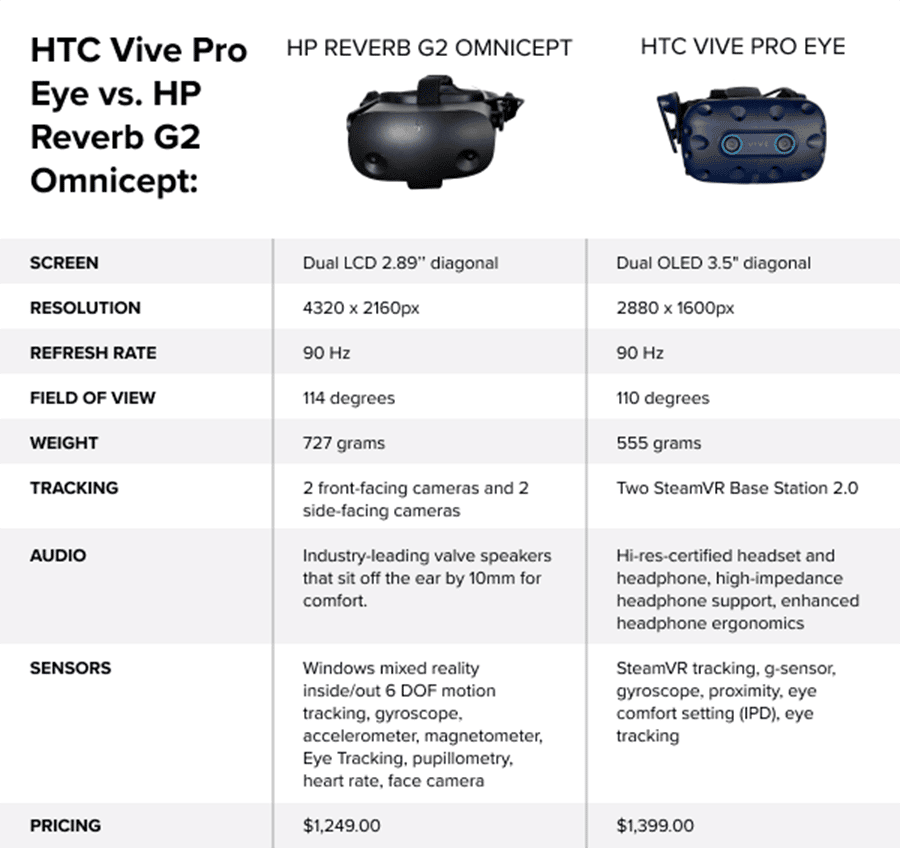
Which HeadSet is Best for Market Research?
The best VR headsets to buy in 2021 for your market research will undeniably include the HTC Vive Pro Eye and HP Reverb G2 Omnicept.
If data accuracy is most important to your studies, then the Vive Pro Eye is likely to be the right choice. Although the Vive Pro Eye may require a more tedious setup using base stations, it features an infrared sensor and a laser tracking system. These features provide the most accurate respondent tracking data.
The Reverb G2 Omnicept is another great choice because it not only features built-in eye-tracking, but offers biometric data. The Omnicept features a face cam, pupillometry, and heart rate tracking. It will provide stunning image quality and the ability to gain additional insights from biometric data.
Subscribe to our newsletter
Get our blogs and the latest retail news delivered to your inbox monthly.
Recent Posts
3D and VR Software Enhancing Retail Assortment Planning
As inflation challenges persist, brands and retailers are leveraging virtual reality technology for cost-effective merchandise assortment planning that helps reduce planning overhead and improve store level compliance that drives conversion. In the ever-evolving retail landscape, staying ahead of trends in product categories and consumer behaviors is critical for success. As we navigate through 2024, retailers…
How VR is Revolutionizing Packaging Design and Research
Virtual reality offers an innovative packaging design solution for the food and CPG industry. Virtual Reality (VR) is changing packaging design and research by offering unique capabilities to innovate, iterate, and optimize. Traditionally, packaging design involved labor-intensive processes such as creating physical mock-ups and conducting extensive testing. This consumes time and materials. Designers may need…
Top CPG Trends to watch in 2024
With 2024 well underway, several impactful shifts are poised to shape the consumer packaged goods (CPG) industry. From the intriguing influence of weight-loss medications on consumer spending behaviors to the digital transformation initiatives reshaping the CPG landscape, each trend brings forth unique challenges and opportunities. The dynamism within the CPG sector fuels innovation, reshaping the…

